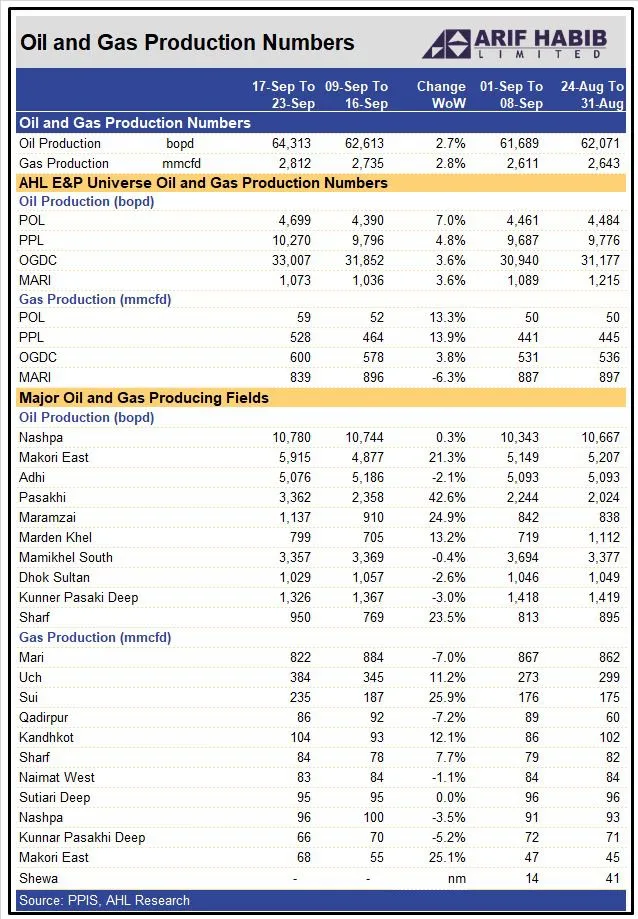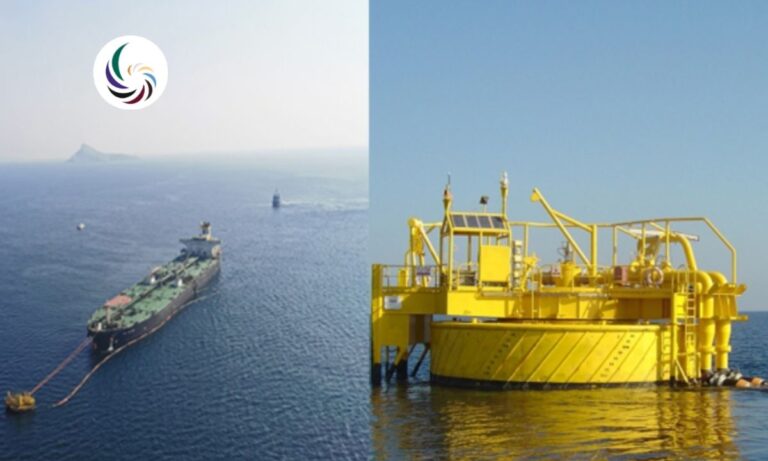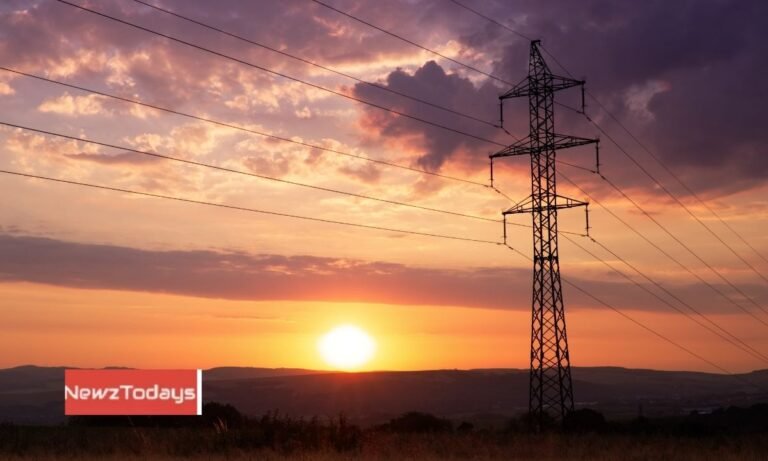Pakistan’s Oil Production Surges to 64,313 bpd
Pakistan’s oil production jumped to 64,313 barrels per day (bpd) while gas output rose to 2,812 million cubic feet per day (mmcfd) in the week ending September 23. It reflects a notable increase in domestic energy supplies.
Industry data compiled by Arif Habib Limited (AHL) from the Petroleum Planning and Infrastructure System (PPIS) showed oil production increasing 2.7 percent compared to 62,613 bpd the previous week.
Moreover, gas production rose 2.8 percent. The uptick was driven by improved performance at several major oil and gas fields by key exploration and production companies.Pakistan Receives First Russian Oil Shipment
Among the listed producers, Pakistan Oilfields Limited (POL) recorded the highest weekly growth in oil production, up 7 percent to 4,699 bpd.

Pakistan Petroleum Limited (PPL) followed with a 4.8 percent increase in production to 10,270 bpd. Oil and Gas Development Company Limited (OGDCL), the sector’s largest player, has witnessed an increase in production by 3.6 percent to 33,007 bpd. However, Mari Petroleum Company Limited (MARI) has registered a decline of 6.3 percent decline to 1,037 bpd during the period under review.
Gas production has shown a similar trend. PPL witnessed a 13.8 percent increase to 528 mmcfd. POL has gained a gas production of 13.3 percent to 59 mmcfd. OGDCL edged up 3.8 percent to 600 mmcfd. However, MARI saw a 6.3 percent drop in its gas output, sliding to 839 mmcfd.
At the field level, several assets stood out for their strong contributions. Nashpa, operated by OGDCL, has remained the largest oil-producing field. It added 10,780 bpd with a marginal 0.3 percent hike.
Makori East has witnessed a sharp increase of 21.3 percent to 5,915 bpd. Pasakhi delivered an unexpected surge of 42.6 percent to 3,362 bpd.
Smaller fields also reported double-digit growth. Maramzai’s growth was up 24.9 percent, and Sharf’s was up 23.5 percent. On the downside, Adhi production dropped 2.1 percent to 5,076 bpd. Kunner Pasaki Deep contracted by 1.3 percent.
Gas production trends have also highlighted the resilience of Pakistan’s oldest fields. Sui has witnessed a long decline and recorded a 25.9 percent rebound to 235 mmcfd.
Uch gas production also jumped 11.2 percent to 384 mmcfd. Meanwhile, Kandhkot and Qadirpur have also added double-digit growth of 12.1 percent and 9.3 percent, respectively.
The Mari field accounts for a significant share of national gas output. It slipped 7 percent to 822 mmcfd and offsets some of the sector-wide gains.
Pakistan’s average oil output has been over 70,000 bpd in the early 2000s. The gas production peaked at over 4,000 mmcfd nearly a decade ago. The latest figures still fall short of historic levels.






